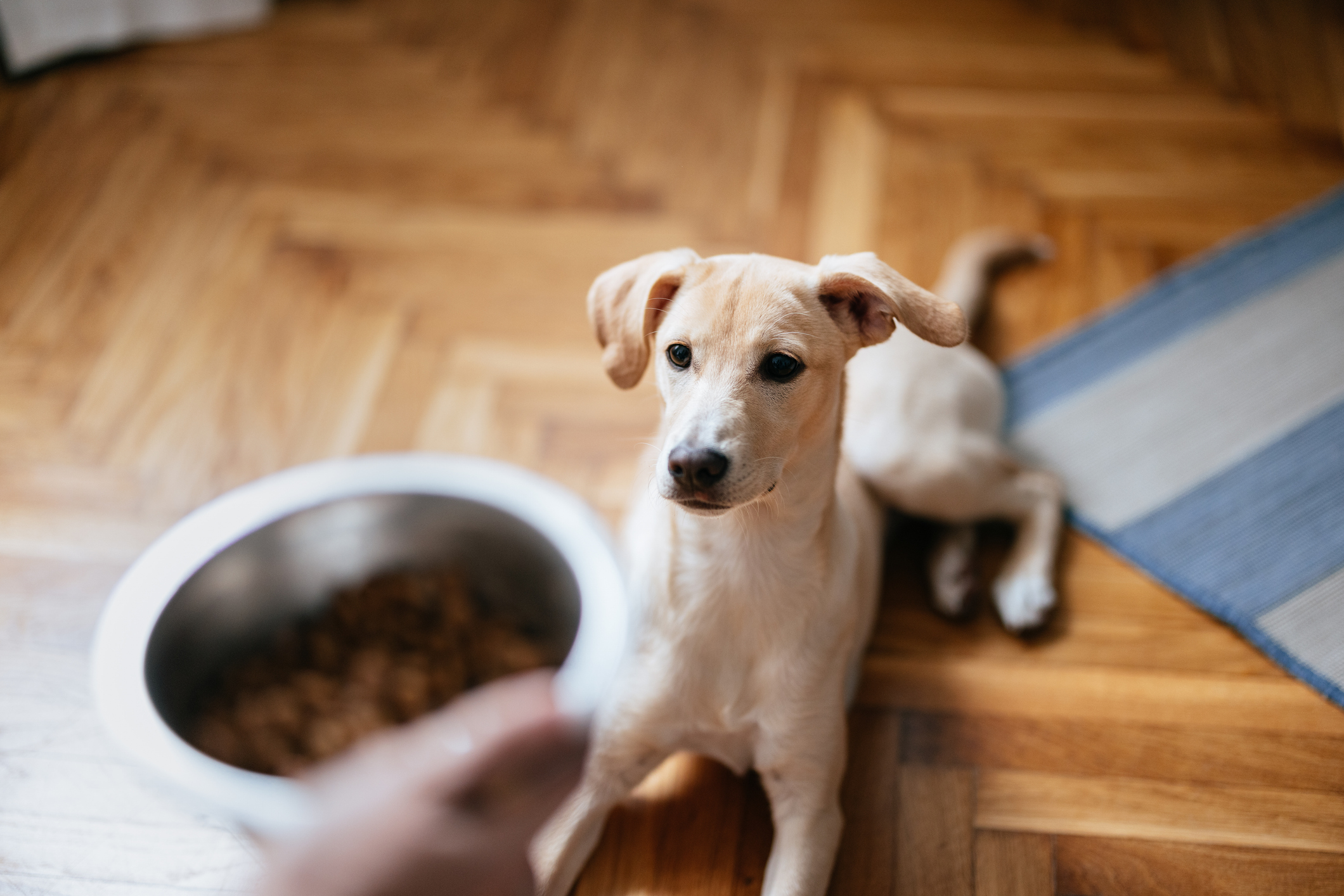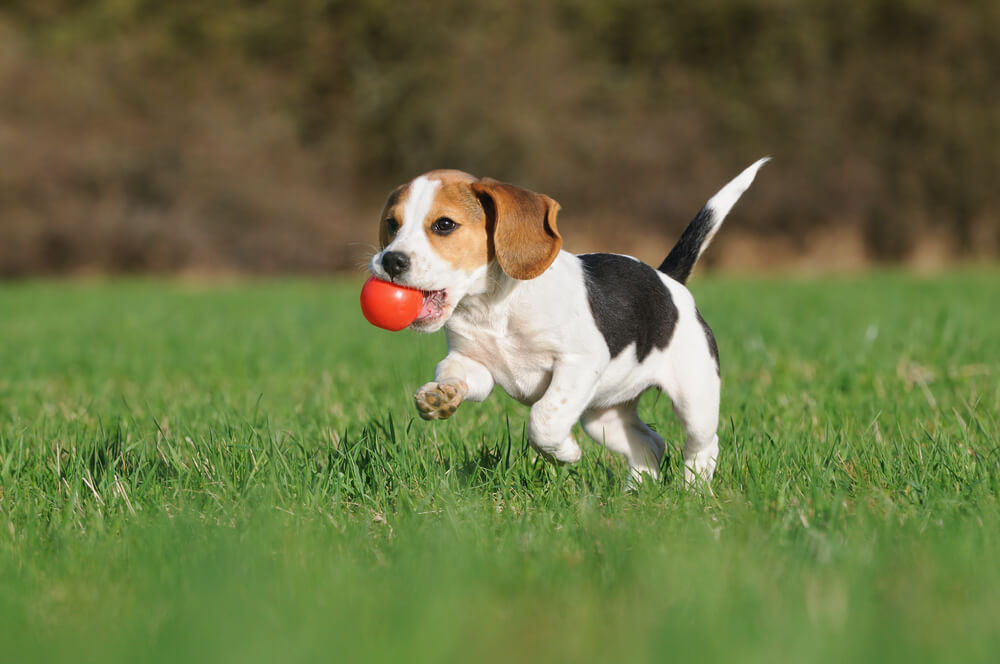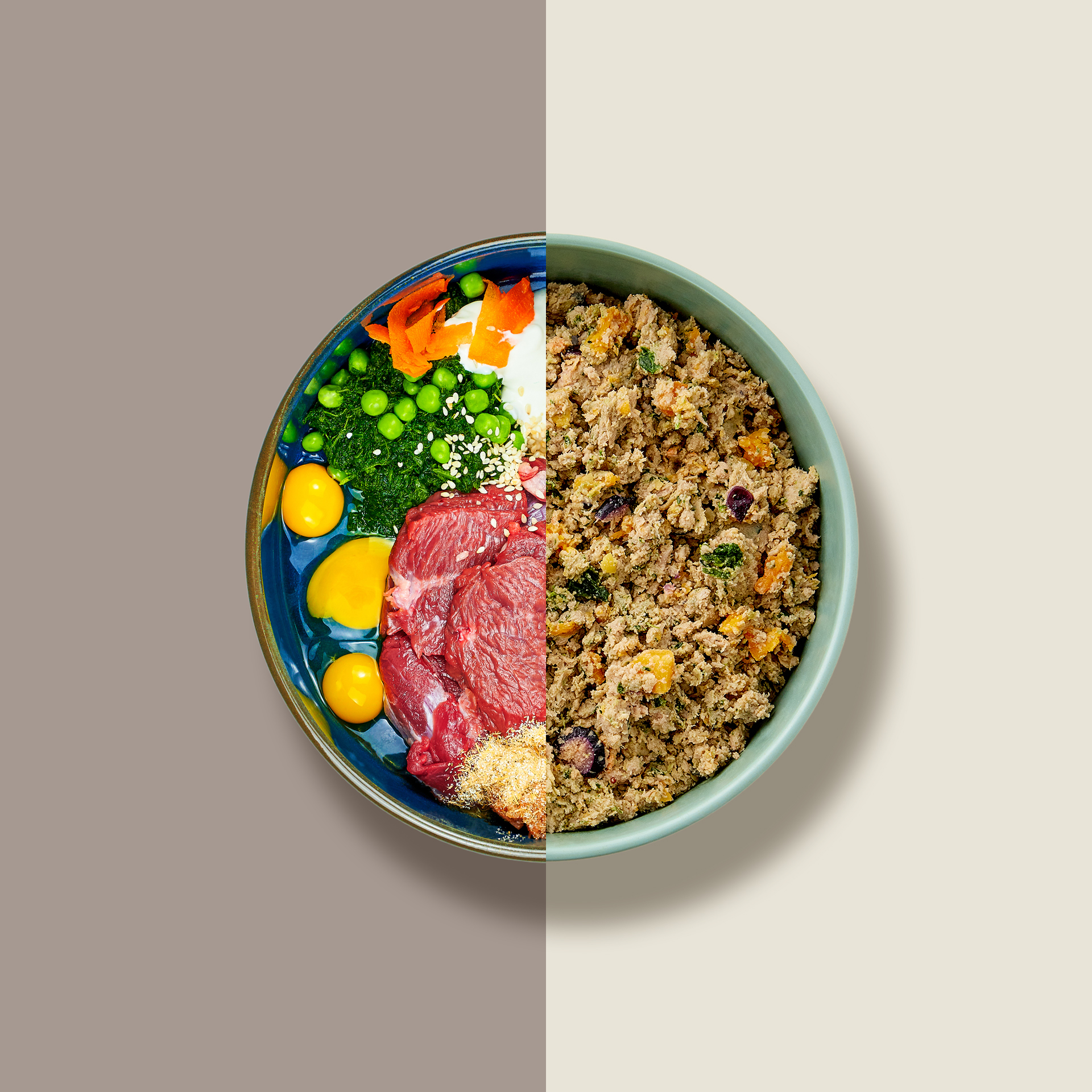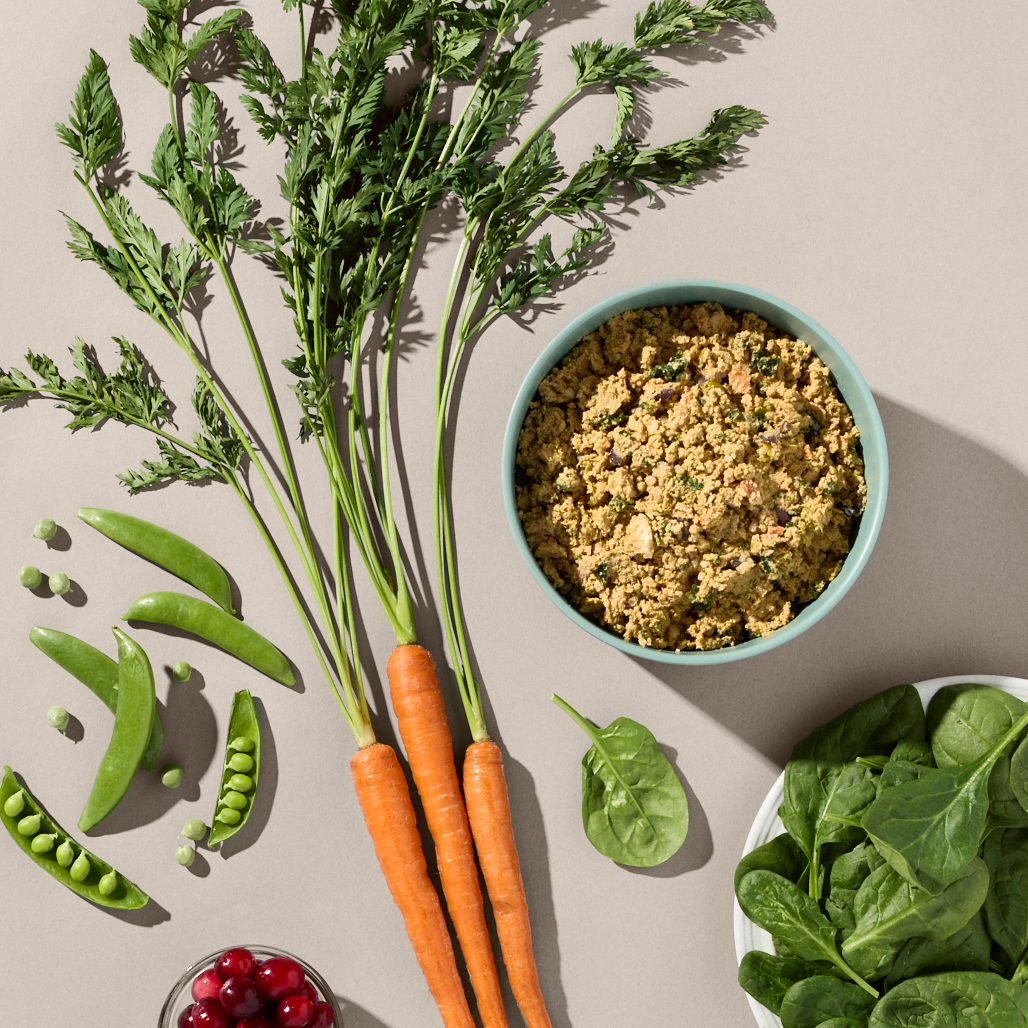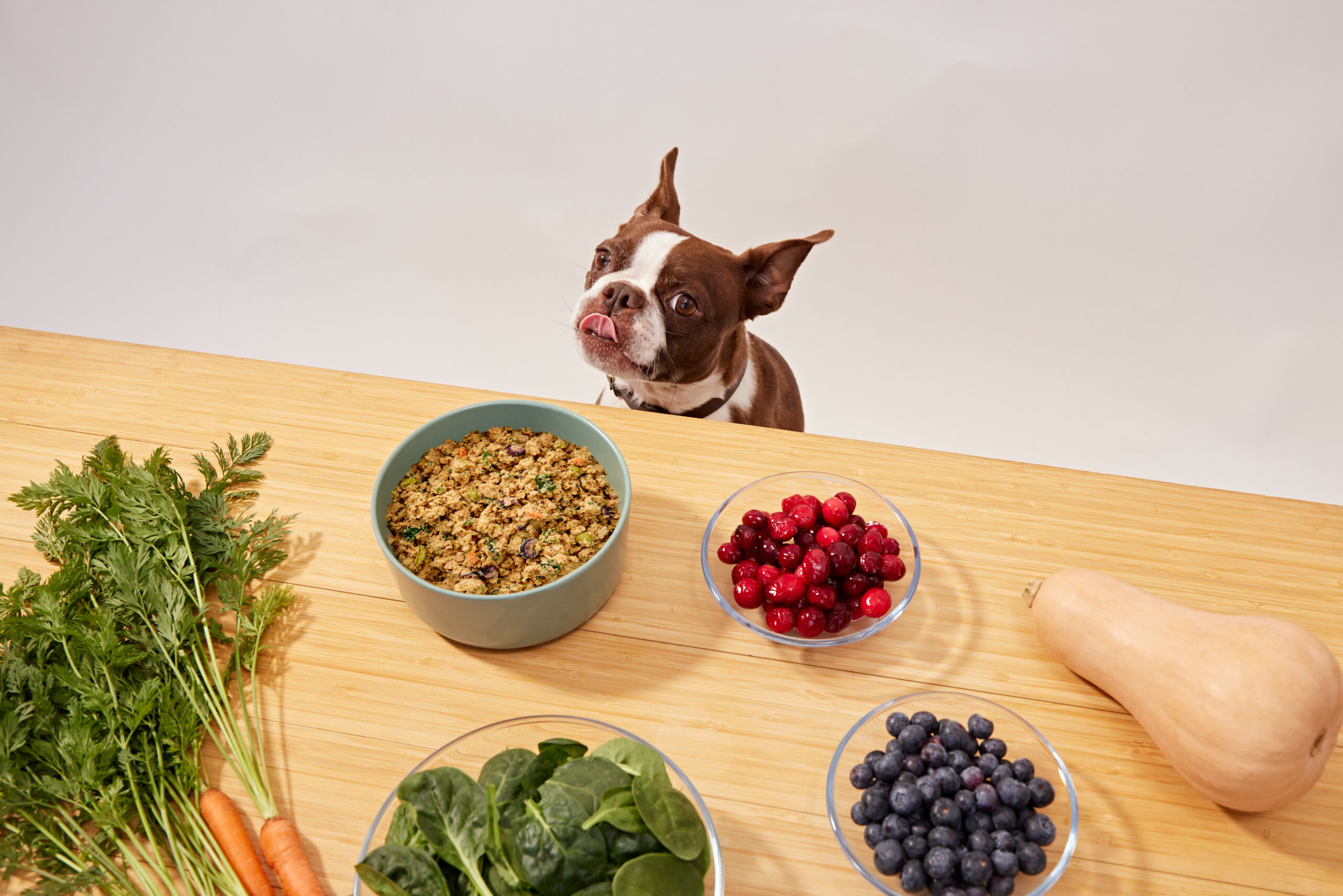Hey Ollie blog readers! We’re offering you an exclusive 60% OFF your starter box! Try now!
As pup parents, we never want to see our dogs uncomfortable. When it comes to itching, swelling, and upset stomachs, the culprit may be in their bowl. Understanding the most common allergens and their symptoms can help you identify potential issues early and find the perfect dog food for allergies.
Recognizing Food Allergy Symptoms in Dogs
Food allergies can manifest in various ways, often developing over time rather than immediately. Your dog might eat the same food for years before developing an allergic reaction. Watch for these key symptoms:

Primary Signs
- Itchy skin, especially on paws, ears, and face
- Gastrointestinal issues including gas, vomiting, or diarrhea
- Chronic ear infections
- Facial swelling
- Hives or skin lesions
Secondary Effects
Ear infections occur in about 50% of dogs with food allergies [1] and sometimes are the only symptom. About 30% of dogs also may suffer from diarrhea or vomiting, especially puppies. [1]
If you notice any of these symptoms, consult your veterinarian for proper diagnosis and testing.
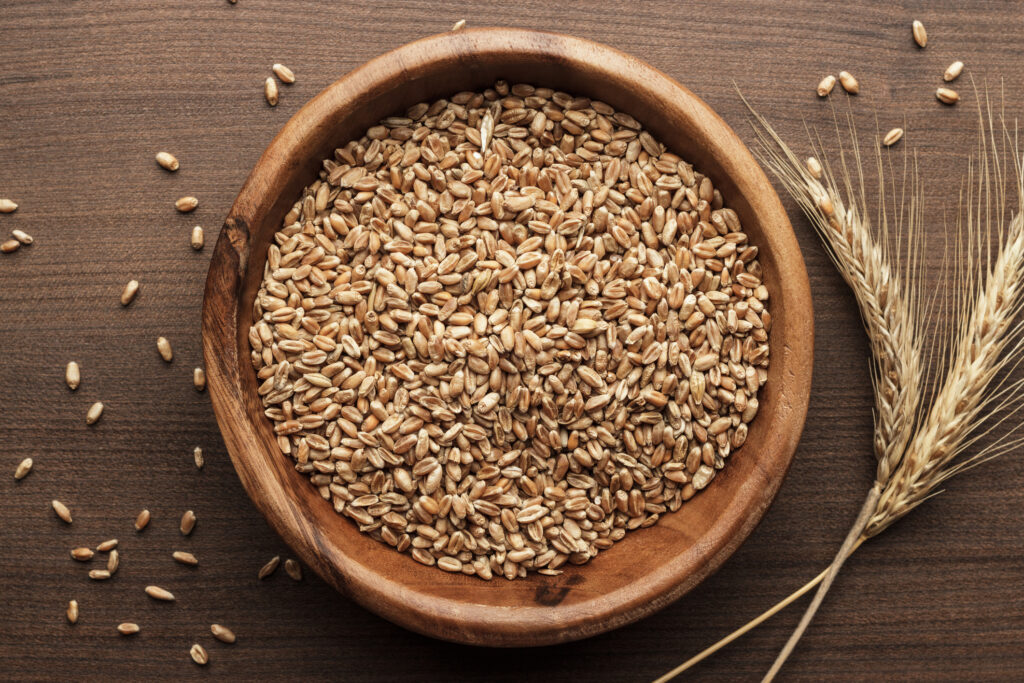
The Top 8 Food Allergens for Dogs
Research shows that the most frequently reported food allergens involved in CAFRs in dogs were beef (102 dogs, 34%), dairy products (51 dogs, 17%), chicken (45 dogs, 15%), wheat (38 dogs, 13%) and lamb (14, 5%) [2]. Here are the primary culprits hiding in your dog’s food bowl:
1. Beef
The most common protein allergen, beef appears in many commercial dog foods. If your pup is allergic to beef, you’ll need to find healthy dog food alternatives using other protein sources like fish, lamb, or novel proteins.
2. Dairy Products
Many dogs are lactose intolerant or allergic to dairy proteins. This includes milk, cheese, and other dairy-based ingredients often found in treats and some dog foods.
3. Chicken and Poultry
Despite being a popular protein source, chicken is a frequent allergen. This extends to turkey and other poultry products. Dogs with poultry allergies need dog food for allergies that uses alternative protein sources.
4. Wheat and Gluten
The most common food allergens in dogs are proteins, especially those from dairy, beef, chicken, chicken eggs, soy, or wheat gluten. [3] Wheat allergies require grain-free options or foods with alternative carbohydrate sources.
5. Soy
Often used as an inexpensive protein filler in commercial dog foods, soy can trigger allergic reactions in sensitive dogs. Many best dog food for sensitive stomachs options avoid soy entirely.
6. Corn
Another common filler ingredient, corn can cause digestive upset and allergic reactions in some dogs. It’s frequently found in lower-quality kibble.
7. Eggs
Other less commonly reported offending food sources were soy (18 dogs, 6%), corn (13 dogs, 4%), egg (11 dogs, 4%), pork (7 dogs, 2%) [2]. Chicken eggs can be problematic for dogs with poultry sensitivities.
8. Fish
While fish is often recommended for dogs with other protein allergies, some dogs develop fish allergies. This includes salmon, cod, and other fish-based proteins.
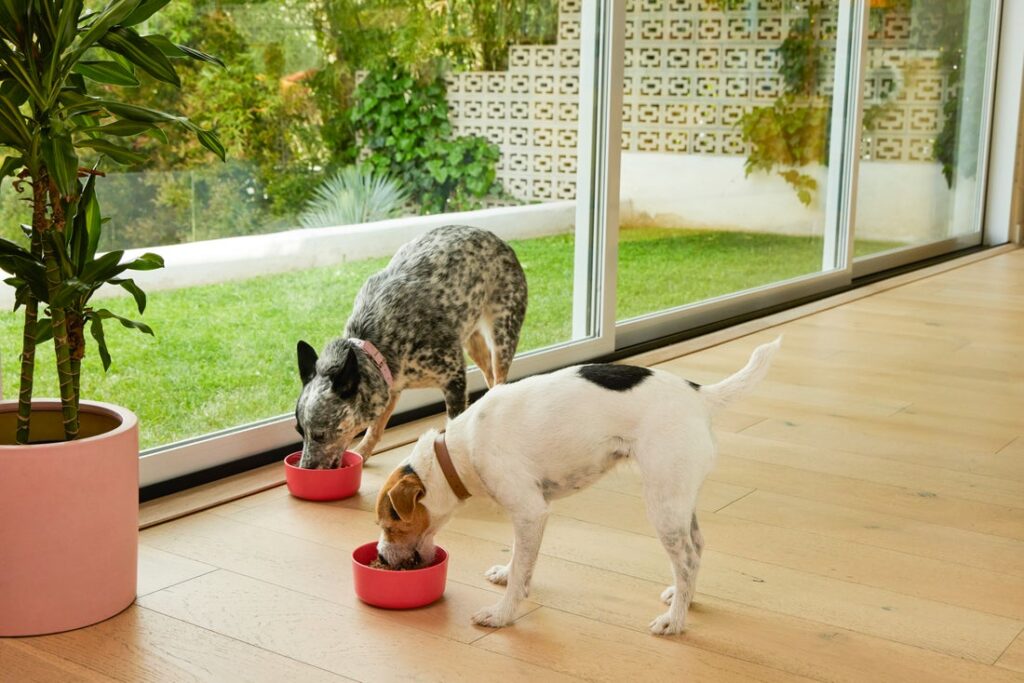
The Benefits of Fresh, Human Grade Dog Food for Allergic Dogs
Traditional kibble often contains multiple potential allergens, making it difficult to identify triggers. Human grade foods had an extremely high digestibility that was higher than that of extruded and fresh diets, without any differences observed in regard to fecal characteristics (pH or score) or metabolites. Many differences in the fecal microbiota were observed among the diets [4].
Superior Digestibility
Research finds that human grade food is more digestible and helps support good gut health in dogs. Based on stool testing, these foods appear to increase nutrient absorption — which means that your pet is able to pull more nutrients from their food. [5]
Ingredient Transparency
Human grade dog food uses ingredients held to the same safety standards as human food, providing complete transparency about what goes into your dog’s bowl. This makes it easier to identify and avoid specific allergens.
Fresh Dog Food Benefits Include:
- Dogs fed fresh food had improved digestion and smaller, more compact stools compared to those on kibble diets
- Reduced exposure to fillers and artificial additives
- Higher moisture content supporting kidney health
- Better nutrient absorption and bioavailability
Managing Your Dog’s Food Allergies
Work with Your Veterinarian
The best and most accurate method of diagnosing a food allergy is to feed a hypoallergenic diet for 8 to 12 weeks as a food trial, called an elimination trial. To be a true elimination trial, this special diet must not contain any ingredients that your dog has eaten in the past. [3]
Read Ingredient Labels Carefully
Always check ingredient lists, as formulations can change. When your dog has confirmed allergies, you’ll need to become vigilant about reading every food and treat label.
Consider Single-Protein Diets
Foods with limited, identifiable ingredients make it easier to pinpoint allergens and find suitable alternatives.
Communicate Allergies to Others
If your dog attends daycare, training classes, or visits the groomer, inform them of any food allergies to prevent accidental exposure.
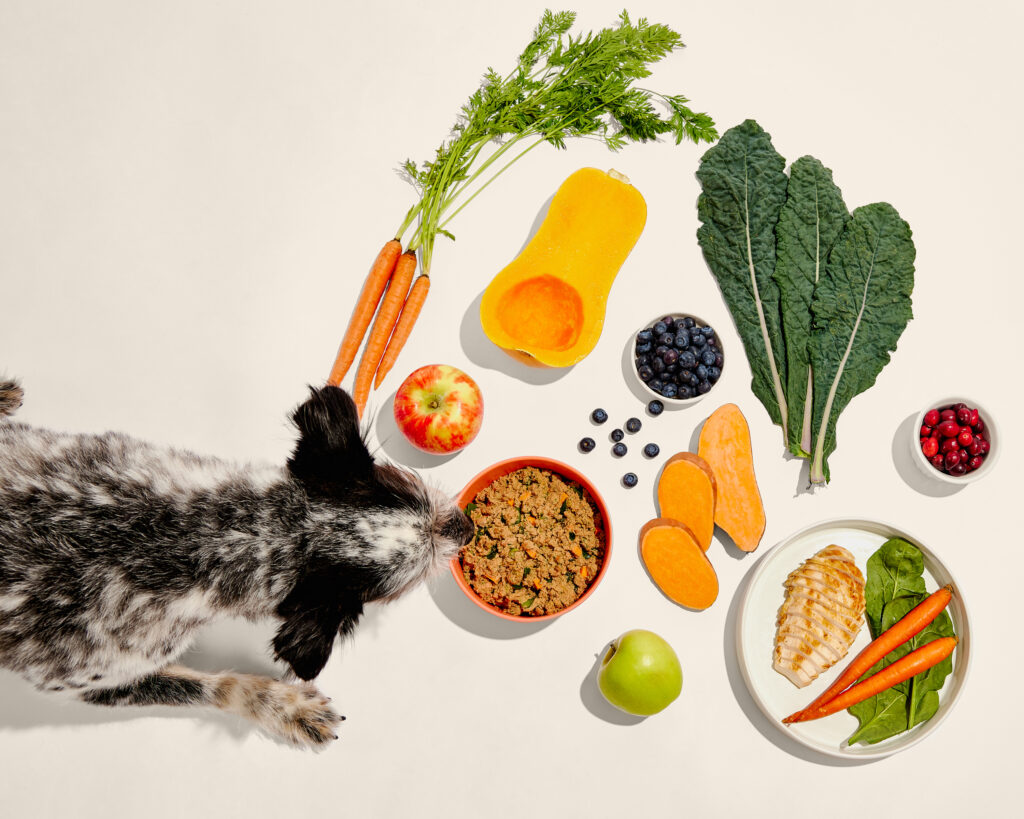
Why Choose Ollie for Dogs with Allergies
At Ollie, we understand that finding the right dog food for allergies can be challenging. Our fresh, human grade dog food recipes feature:
- Single animal proteins – Making it easier to accommodate dogs with specific protein allergies
- No common fillers – We never use corn, soy, or wheat, which are frequent allergens
- Transparent ingredients – Every ingredient is human-grade and clearly listed
- Veterinary nutritionist oversight – All recipes are formulated by experts to ensure complete nutrition
With options like our grain-free recipes and novel protein sources, we can accommodate most dietary restrictions while providing the fresh dog food benefits your dog deserves.
Ready to start fresh? Find your dog’s recipe for success with Ollie.
Frequently Asked Questions
Q: How long does it take to see improvement after switching to allergy-friendly food?
A: Most dogs show improvement within 8-12 weeks of eating a proper elimination diet, though some may see changes sooner.
Q: Can dogs develop new food allergies over time?
A: Yes, dogs can develop allergies to foods they’ve eaten safely for years. Dogs that have developed an allergy to a particular food may develop other food-related allergies in the future. [3]
Q: Are grain-free diets always better for dogs with allergies?
A: Not necessarily. While grain allergies exist, protein allergies are more common. The key is identifying your dog’s specific triggers through proper testing.
Q: What’s the difference between food allergies and food sensitivities?
A: Food allergies involve an immune system response, while sensitivities typically cause digestive upset without immune involvement. Both require dietary management.
Q: Is fresh dog food worth the cost for allergic dogs?
A: Many pet parents find the improved health, reduced vet visits, and better quality of life make fresh, human grade dog food a worthwhile investment for dogs with allergies.
Ready to help your dog avoid allergens and thrive? Take our quiz to create a personalized meal plan that accommodates your pup’s specific needs while providing all the fresh dog food benefits of human-grade nutrition.
Citations
- [1] https://www.akc.org/expert-advice/nutrition/dog-food-allergies/
- [2] https://pmc.ncbi.nlm.nih.gov/articles/PMC4710035/
- [3] https://vcahospitals.com/know-your-pet/food-allergies-in-dogs
- [4] https://aces.illinois.edu/news/first-study-human-grade-dog-food-says-whole-fresh-food-highly-digestible
- [5] https://wagtantrum.com/blogs/news/why-fresh-dog-food-could-add-years-to-your-pets-life-2025-guide
Tagged As:

The nutrition your dog needs,
the food they want.

Enjoying our articles? Subscribe our Newsletters and get new articles directly to your inbox
You might also like
12 August 2025
5 MINS READ
Raw vs. Gently Cooked: Which Is Ideal for Your Pup?
As more pup parents seek the best fresh dog food for their companions, they may find themselves choosing between a raw diet and a fresh diet. While cases have been made for both options, let’s exa…
by Ollie Pets
12 August 2025
5 MINS READ
Why Human-Grade Ingredients Matter for Your Dog
A healthier, happier dog starts with the right food. That said, knowing which diet is best for your pup can be overwhelming at times. Understanding what human-grade means, why it matters, and how …
by Ollie Pets
12 August 2025
7 MINS READ
Spotlighting the Top Nutrients for Your Dog
Just like humans, your dog’s health depends heavily on the food they consume daily. Read on to learn more about essential nutrients for your dog’s health and explore how fresh, human-grade dog foo…
by Ollie Pets
